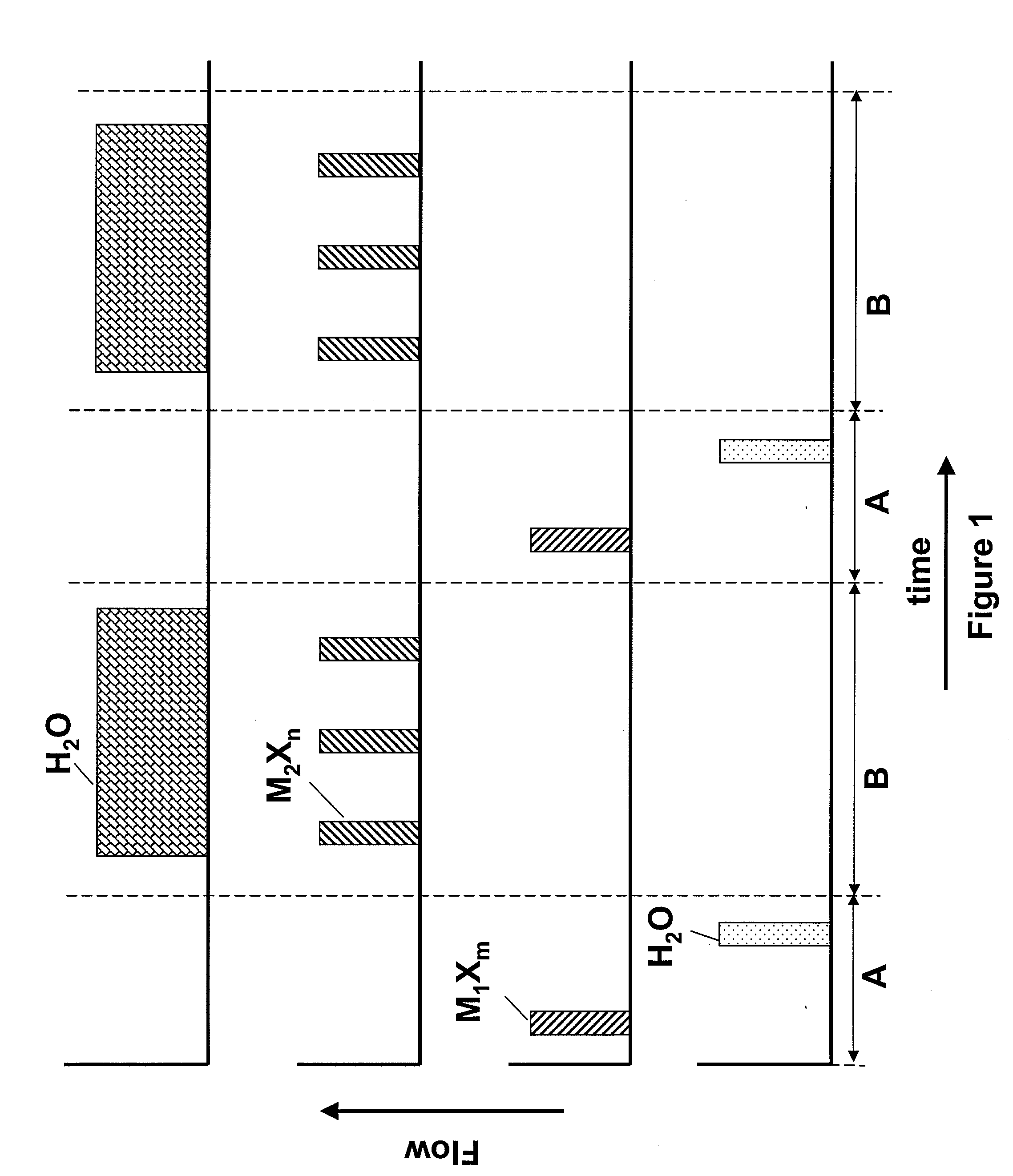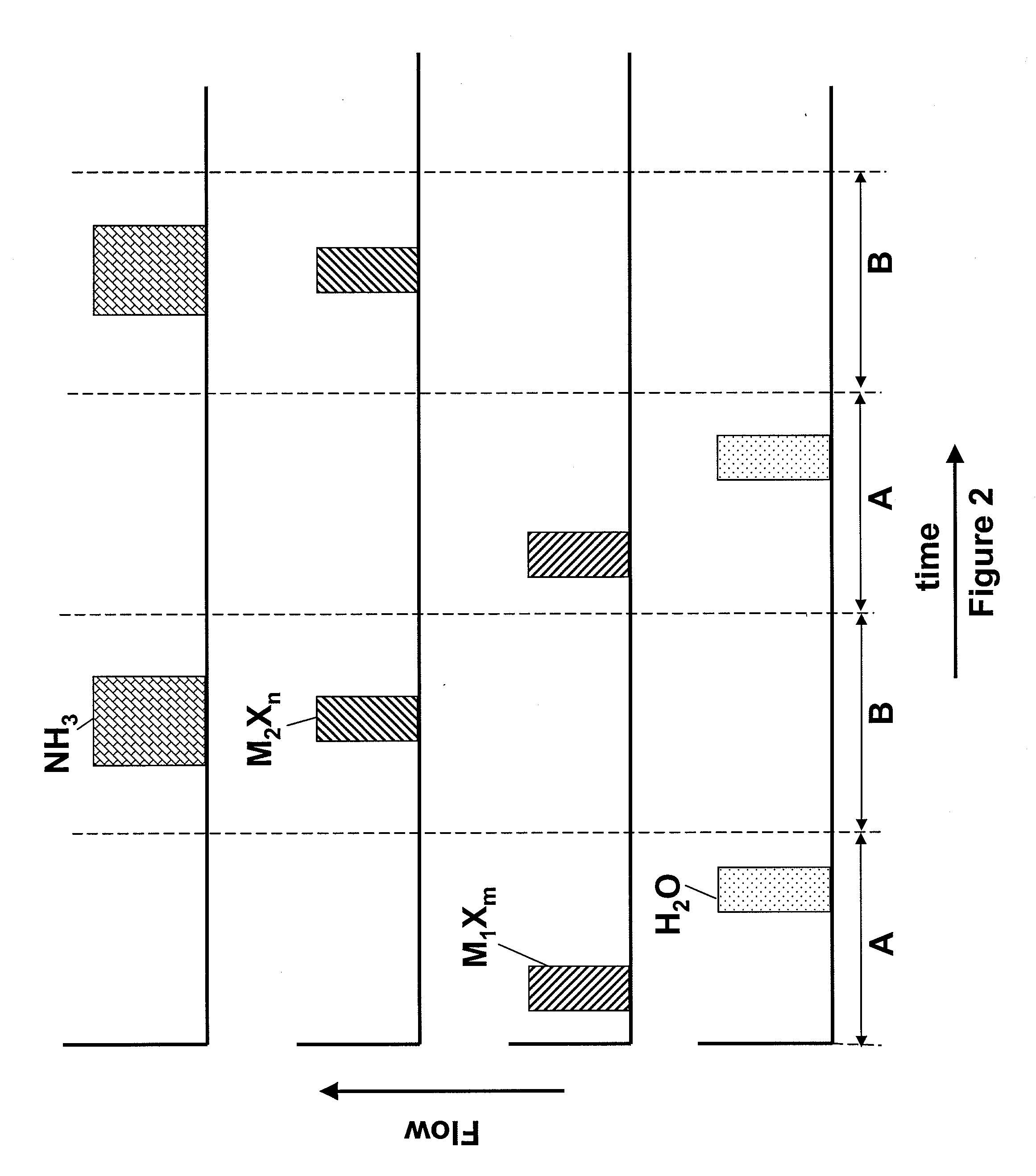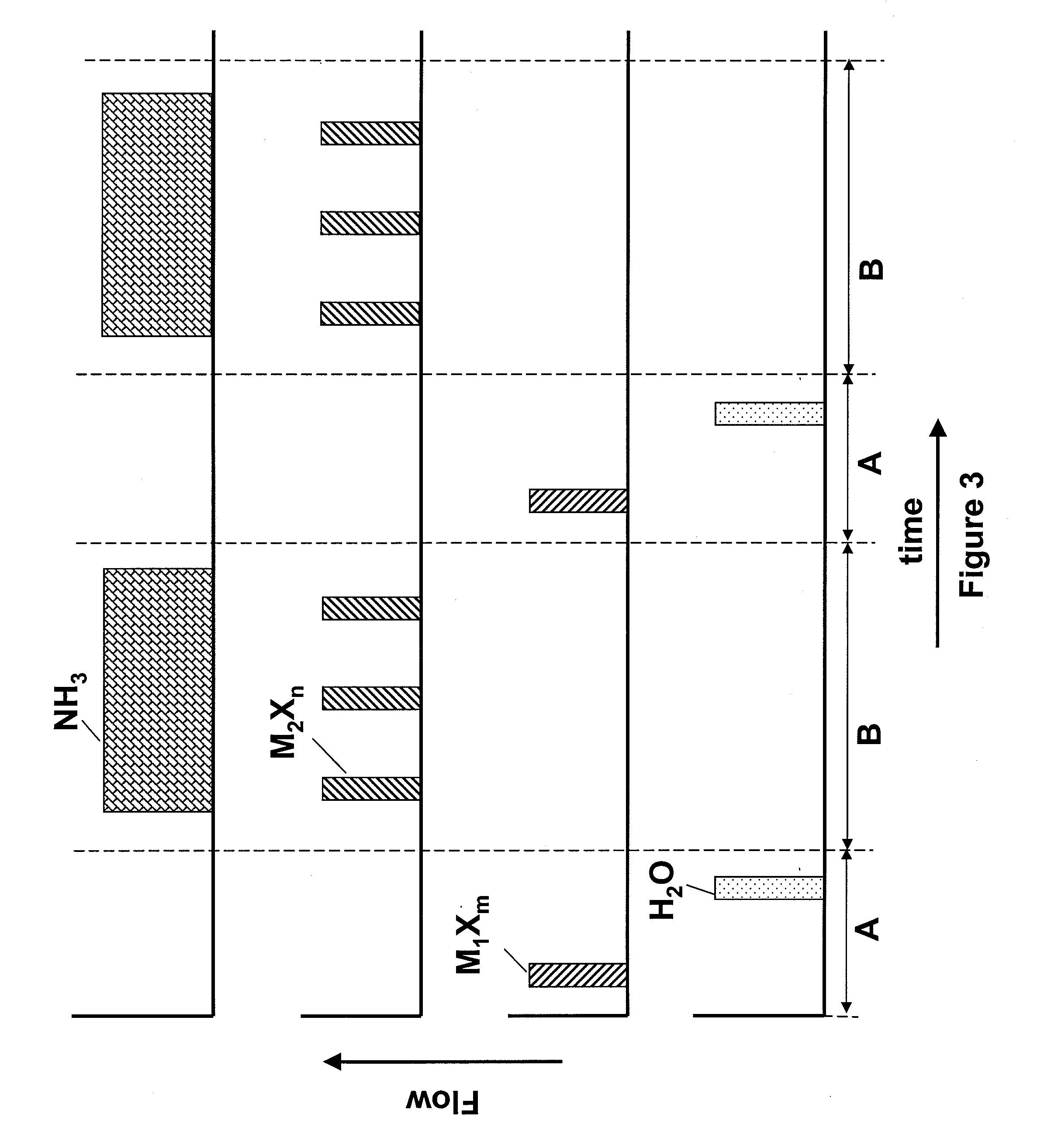Method for depositing thin films by mixed pulsed CVD and ald
- Summary
- Abstract
- Description
- Claims
- Application Information
AI Technical Summary
Benefits of technology
Problems solved by technology
Method used
Image
Examples
example 1
[0042]A hafnium silicate layer is deposited using pulses of HfCl4, SiCl4 and H2O as reactants at a temperature of about 350° C. The sequence as shown in FIG. 1 is applied, where M1Xm, the first metal halide, is HfCl4 and M2Xn, the second metal halide, is SiCl4. The number of SiCl4 pulses is selected to achieve a desired silicon content.
example 2
[0043]A hafnium silicon oxynitride layer is deposited using pulses of HfCl4, SiCl4, NH3 and H2O as reactants. The sequence of FIG. 2 is applied, where M1Xm, the first metal halide, is HfCl4 and M2Xn, the second metal halide, is SiCl4. The length of the pulses in period B is tuned to achieve the desired silicon and nitrogen content. The deposition temperature is about 350° C.
[0044]Alternatively, HfCl4 and SiCl4 are mixed and pulses of the mixture are flowed into a reaction chamber with pulses of an oxidant in an ALD mode of operation during a period A and pulses of the mixture are flowed into the reaction chamber with NH3 in a pulsed CVD mode of operation during a period B.
example 3
[0045]Hafnium oxide layers are deposited using HfCl4 as the Hf source material. The sequence of FIG. 3 is followed, wherein a first nucleation layer is deposited using HfCl4 and H2O in an ALD mode of processing. Then the remainder of the film is deposited by flowing a plurality of pulses of HfCl4 along with a continuous flow of O3 into the reactor. In this example, the first and second metal are the same and are both Hf. The deposition of the hafnium oxide layers in the pulsed CVD mode of operation may be periodically alternated with one or more cycles of hafnium oxide deposited using the ALD mode of operation.
PUM
| Property | Measurement | Unit |
|---|---|---|
| Flow rate | aaaaa | aaaaa |
Abstract
Description
Claims
Application Information
 Login to View More
Login to View More - R&D
- Intellectual Property
- Life Sciences
- Materials
- Tech Scout
- Unparalleled Data Quality
- Higher Quality Content
- 60% Fewer Hallucinations
Browse by: Latest US Patents, China's latest patents, Technical Efficacy Thesaurus, Application Domain, Technology Topic, Popular Technical Reports.
© 2025 PatSnap. All rights reserved.Legal|Privacy policy|Modern Slavery Act Transparency Statement|Sitemap|About US| Contact US: help@patsnap.com



